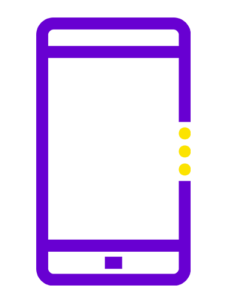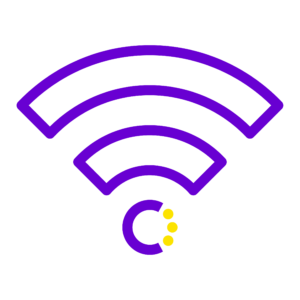Where it all began…
As you’ve likely deduced from the name of the service, mobile networks were invented to serve mobile people. Way back when, the dawn of the mobile phone ushered in the age of connectivity we know and thrive in today, and in those early days that connectivity was too convenient not to also wriggle its way into fixed locations.
Mobile data connectivity was created to offer a broadband service wherever you may be so it made sense, with the advent of 3G, to utilise that connectivity for things like vending machines and car park ticket machines in areas that previously were difficult to connect with, as well as, say, building sites, which needed fast but temporary bandwidth.
These worked reasonably well, but they were more a temporary solution to an ongoing problem than an out and out complete fix.
Then came 4G: services got faster, more reliable, and better equipped to serve both isolated locations, and act as a backup solution in high availability applications too.
Welcome to the age of 5G
4G to 5G
Now we find ourselves in the age of 5G, designed to support high availability applications, at higher speeds and lower latency, and also confidently serve increasingly dense populations of end devices.
And just in time, too: we’re seeing a seismic shift in working patterns following the pandemic and something’s going to have to step up to ease the connectivity gap as we continue, for the most part, to work remotely.
As such, there are plenty of future opportunities for cellular broadband – providing service providers are able to overcome the current deficiencies in its management.
Without its 4G connection, Aldi - and many other businesses - would find it more challenging to be as agile.
An appetite for consumption
Consider Gamma customer Aldi, the brand that made an art form of nimble retail and turned it into chart-topping customer satisfaction and loyalty. 4G connections have ensured its stores are quick to set up and connect, and also back up the Ethernet and DSL connections that follow on.
Without that 4G connection Aldi – and many other businesses – would find it more challenging to be as agile. Add 5G into the mix and the cellular connection could become the primary one as, in some cases, it’ll be superior to the fastest available landline connection.
It’s a game-changer for business operations and can be for individual users too. As the remote working phenomena continues, more and more of us are tethering our laptops and devices to our phones for a better broadband service when our video calls aren’t up to scratch, or when we want to make the most of outdoor working outside the reach of our home broadband.
This past year and a bit has proved that there’s a huge appetite for 5G services – services that could augment, or outright replace, existing business broadband connections for a better, more dynamic experience.
Aldi’s 4G connections have ensured its stores are quick to set up and connect, and also back up the Ethernet and DSL connections that follow on.
The final challenge to overcome
That being said, there is still plenty of scope for varying 5G service quality – it’s still a radio signal after all.
The final challenge to overcome, and the critical assurance that businesses need before promoting cellular broadband into the ‘premiership’, is a real world, real time understanding of the quality of service being delivered.
Not simply on or off, up or down, but the warp and weft, colour and texture. And to make that information available, relatable and actionable to people that manage businesses, customers, services and workflows. Not just network managers.
Sounds like a good idea, right?
Amazing that not one of the traditional network operators can actually do it, then. Cellular broadband’s past has this ‘best endeavours, no guarantees, buyer beware’ ethos that felt acceptable when being mobile was a novelty. But it can’t be part of its future. So we decided to fix it.
Gamma’s solution can gather detailed performance data from cellular networks and customer premise equipment and uses powerful algorithms to display meaningful interpretations of service performance and customer experience. We designed it specifically for managers in enterprises and the customer advocates and service personnel here at Gamma.
It brings a single view simultaneously to both customer and service provider, and informs a proactive conversation around usage, service quality, and the scope of continuous improvement.
Fixed cellular connectivity is mission critical
Better together
Fixed cellular connectivity isn’t up for debate: it’s already ubiquitous and is increasingly mission critical. What is up for debate is the quality of that connectivity.
We know a great connection means great things; we know not having that connection means trouble. And in between – in the many shades of grey provoked by the equivalent of ‘two bars on the mobile’ – we need to understand and manage the quality of experience to expect. That’s where we’ll come in.
Through a winning combination of brilliant coverage, 5G bandwidth, and an excellent service wrap, we’re uniquely positioned to offer cellular broadband as a real alternative to fixed-line connectivity, keeping our customers critically connected, their services uninterrupted, and their workers as remote as they’d like to be.
What next?...
Read: Redistribution of the WAN: why building back better means smarter networks
The decentralised WAN is about to blossom, and on a scale thought unimaginable at the start of 2020.
How will the enterprise WAN adapt to the unstoppable shift towards remote working – a significant development in society’s attitude to work and the workplace.
It’s time to explore what’s desirable, what’s optimal, and what’s actually achievable on the ground.
In our recent article, Redistribution of the WAN: why building back better means smarter networks, we explore the challenges that the shift presents to traditional WANs.






